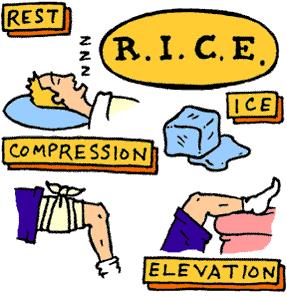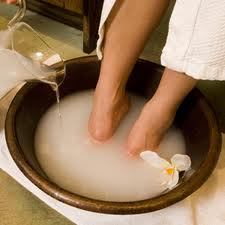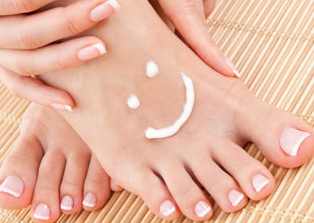- No products in the cart.
Foot Health & Safety Awareness
The month of April is recognized as National Foot Health Awareness month in the United States. In celebration of this, Stikii will focus some of their upcoming blogs on tips and information to help you keep your feet healthy and safe. After all, we only get one pair of feet, so they must last us a lifetime!
 According to the American Podiatric medical Association (APMA), most Americans log an astounding 75,000 miles on their feet by the time they reach the age of 50. Regular foot care helps to ensure that your feet can handle the hike, so to speak. With a little bit of knowledge, and proper attention, many foot and ankle problems can be lessened or prevented! Below are some of the most common foot problems and what causes them.
According to the American Podiatric medical Association (APMA), most Americans log an astounding 75,000 miles on their feet by the time they reach the age of 50. Regular foot care helps to ensure that your feet can handle the hike, so to speak. With a little bit of knowledge, and proper attention, many foot and ankle problems can be lessened or prevented! Below are some of the most common foot problems and what causes them.
Sprains, Strains & Fractures – A sprain is a soft tissue injury, where a fracture is actually a break in one of the many bones the make up the foot and ankle. These can be caused by twisting, rolling or turning your ankle/foot beyond its normal motion often due to a great force transmitted upon landing. They can also be the result of a sudden impact or walking/running on an uneven surface.
If you suspect a sprain or fracture, visit your doctor or nearby emergency room in order to receive an accurate diagnosis. Treatment also includes wrapping or casting the afflicted area, and the R.I.C.E. method. The RICE method is a means of treatment comprised of rest, ice, compression and elevation.
 Athlete’s Foot – This is a skin disease caused by a fungus. It commonly attacks the feet because shoes create a warm, dark and human environment that promotes fungus growth. Treatment includes keeping your feet clean and dry, and applying an over-the-counter, anti-fungal athlete’s foot medication.
Athlete’s Foot – This is a skin disease caused by a fungus. It commonly attacks the feet because shoes create a warm, dark and human environment that promotes fungus growth. Treatment includes keeping your feet clean and dry, and applying an over-the-counter, anti-fungal athlete’s foot medication.
Warts – A wart on the foot is the result of a soft tissue condition caused by a virus. Plantar warts are the most common of foot warts and occur on the bottom of the foot. They are typically hard, flat and rough. Treatments include freezing, laser treatment, salicylic acid and other options. Before selecting a treatment, be sure to consult your doctor to determine the best remedy for you.
Ingrown Toenails – Ingrown toenails are the most common nail impairment. They occur when the corners or sides of the toenail dig into the soft tissue of nail grooves, which often leads to irritation, redness and swelling. For a home treatment, try soaking the affected toe in warm water and Epsom salts for approximately 20 minutes, three to four times a day. If this doesn’t help, podiatrists can easily treat this condition.
 Bunions – A bunion is the enlargement of the joint at the base of the big toe. It forms when the bone/tissue at this joint moves out of place. Bunion pads, arch supports, ice and nonprescription pain relievers can help to alleviate symptoms at home. Often, however, surgical treatment is required – see your doctor for more information on the surgical options available for bunions.
Bunions – A bunion is the enlargement of the joint at the base of the big toe. It forms when the bone/tissue at this joint moves out of place. Bunion pads, arch supports, ice and nonprescription pain relievers can help to alleviate symptoms at home. Often, however, surgical treatment is required – see your doctor for more information on the surgical options available for bunions.
 These are just a handful of the ailments that can affect our feet and ankles. Proper care can help us to avoid several of these conditions. Below are a few tips to keeping your feet healthy, thanks to APMA’s Foot Care 101 guide!
These are just a handful of the ailments that can affect our feet and ankles. Proper care can help us to avoid several of these conditions. Below are a few tips to keeping your feet healthy, thanks to APMA’s Foot Care 101 guide!
- Was feet daily with soap and water
- Keep feet dry
- Trim toenails often
- Wear supportive, properly fitted shoes
- Apply lotion, especially when the weather is hot and dry
- Don’t ignore foot pain!
- Exercise
- Avoid walking barefoot, especially in potentially hazardous areas
By following these simple stops, you are well on your way to happy and healthy feet! Stay tuned for more Foot Health & Safety blogs during the month of April!

